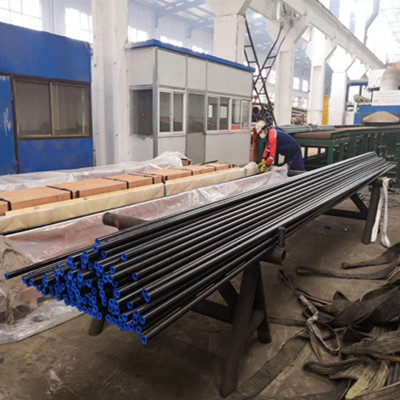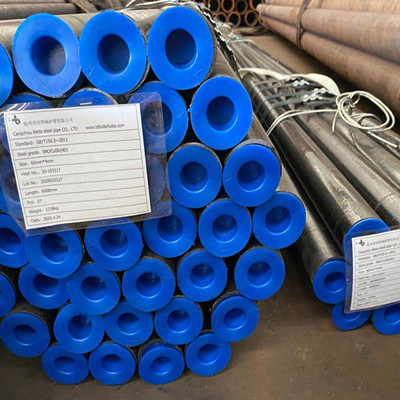Performance characteristics standards of ductile iron pipe
Performance characteristics and standards of ductile iron pipe
Basic knowledge of ductile iron pipe-performance characteristics and standards of ductile iron pipe
Introduction
In many areas of our country, ductile iron pipes are connected between medium and small diameter feed pipes and pipes using socket or flange connection methods; ductile iron, the allowable and restricted corners must have excellent shock resistance and sealing Sex.
The main components of ductile iron pipes are carbon, silicon, manganese, sulfur, phosphorus and magnesium. Executive standard GB/T13295-2003 ISO2531/2003
Ductile cast iron pipes are defined as pipes made from molten iron of No. 18 or above by adding spheroidizing agent and then passing through a high-speed centrifugal casting of a centrifugal nodular cast iron machine. Ductile cast pipe, etc.
Features
Ductile iron pipe is a kind of cast iron pipe. In terms of quality, the spheroidization grade of cast iron pipes is required to be controlled at 1-3 (spheroidization rate>80%), so the mechanical nodular cast iron pipe product warehouse of the material itself can be better improved, which has the essence of iron and steel. performance. The annealed ductile iron pipe has a metallographic structure of ferrite plus a small amount of pearlite, good mechanical properties, excellent corrosion resistance, good ductility, good sealing effect, easy installation, and mainly used for water supply and gas transmission in municipal, industrial and mining enterprises , Oil and so on.
A certain amount of spheroidal graphite is distributed on the ferrite and pearlite matrix. According to the nominal diameter and the requirements for elongation, the ratio of ferrite and pearlite in the matrix structure is different. The ratio of pearlite with small diameter Generally, it is not more than 20%, and the large-caliber is generally controlled at about 25%.
Mechanical properties
Minimum tensile strength: 420/Mpa, minimum yield strength: 300/Mpa, minimum elongation rate 7%
GB/T13295-2008 ISO2531-2009
Caliber: DN80-DN2600
History
In 1947, British H. Morrogh discovered that when cerium was added to hypereutectic gray cast iron, the graphite was spherical when the content was above 0.02wt%. In 1948, the American A. P. Ganganebin et al. pointed out that adding magnesium to cast iron followed by inoculation with ferrosilicon, when the residual magnesium content is greater than 0.04wt%, spherical graphite is obtained. Since then, nodular cast iron has begun large-scale industrial production. The history of the use of ductile iron pipes can be traced back to the 21.14Km water pipeline from the Seine to Versailles in the suburbs of Paris in 1668. 300 years have passed. Except for the repair and replacement of some pipes and joints, the main body is still in use today. Current status and prospects of ductile iron pipes in my country. The ductile iron pipe industry in China started in the early 1990s. It has developed rapidly with the strong support of the China Urban Water Supply Association. After nearly 20 years of practical use, its safety and practicality have been The water supply industry generally recognizes that the domestic annual output in 2008 has reached 2.2 million tons, 11 times that of 1990. Since my country is a country lacking water resources, there are more than 600 water-deficient cities and more than 200 severely water-deficient cities. Water supply and water conservation are in the ascendant, and ductile iron pipes have broad development prospects.
Pros and cons
Folding advantages
In the medium and low pressure pipe network, the ductile iron pipe has the advantages of safe and reliable operation, low damage rate, convenient and fast construction and maintenance, and excellent anti-corrosion performance.
Folding disadvantages
Generally not used in high pressure pipe network, with low pressure resistance. Since the pipe body is relatively heavy, machinery must be used for installation. If there is water leakage after the pressure test, all the pipes must be dug out, the pipes must be hoisted to a height that can be put into the clamp, and the clamp is installed to prevent the leakage.
Point
1. Trench excavation
The width of the groove bottom should be calculated as follows: B=D1+2(b1+b2)
Where: B- Width of excavation at the bottom of the pipeline trench (mm) D1- Width of the outer edge of the pipeline structure (mm) b1- Width of the working surface on one side of the pipeline (mm) b2- Support width on one side of the pipeline (mm) .
2. Groove support
According to the trench soil quality, groundwater, slotted section, load conditions and other factors, the design is required to be firm and reliable, to prevent collapse, and the support must not hinder the down tube and the stable tube.
3. Buttresses should be provided at the turning point of the T-shaped joint pipeline in the vertical or horizontal direction. The size of the buttress should be determined by calculation based on factors such as pipe diameter, rotation angle, and working pressure.
4. When transporting drinking water, the pipeline should not pass through the poisonous polluted area. If it must pass, protective measures should be taken.
5. All the ductile iron pipelines connected by sockets must be provided with buttresses after calculation. Refer to the National Building Standard Design Atlas 03SS505 "Flexible Joint Water Supply Pipeline Buttress".
6. The outer anti-corrosion coating of ductile iron pipes should be galvanized and epoxy asphalt coatings or coatings with higher requirements according to the soil conditions of the pipe application site.
7. After the pipeline is installed and the pressure test is qualified, it should be rinsed with low chloride ion water and disinfected with 0.03% potassium permanganate aqueous solution.
Standard
Folding products
GB/T 13295-2008 Ductile iron pipes, fittings and accessories for water and gas pipelines
GB/T 17457-1998 General requirements for cement mortar centrifugal lining of ductile iron pipe
GB/T 17458-1998 Nodular cast iron pipe cement mortar centrifugal method lining fresh mortar composition inspection
GB/T 17459-1998 Nodular cast iron pipe asphalt coating
GB/T 17456 Nodular cast iron pipe with zinc spray
GB/T 17219-1998 Safety evaluation standard for drinking water distribution equipment and protective materials
Folding project "Code for Construction Quality Acceptance of Building Water Supply and Drainage and Heating Engineering" GB50242-2002
Related standard diagram
10S505 "Flexible interface water supply pipe buttress"
Recommendations for Folding Selection
1. The selection of ductile iron pipes should be based on the specific conditions of the installation site, and the interface between straight pipes and fittings should be selected.
2. The rubber ring is recommended to use EPDM rubber ring.
3. The choice of coating: choose a suitable coating according to the internal and external conditions during use. The existing internal coatings are epoxy resin, polyurethane internal and external coatings, PE film coatings and other new products of ductile iron pipes, and their performance should be understood in detail when selecting them.
Weight table of ductile iron management theory

Performance
Ductile iron pipe is a kind of cast iron, an alloy of iron, carbon and silicon. Graphite in nodular cast iron exists in spheroid form. Generally, the size of graphite is 6-7. The quality requires that the spheroidization grade of the cast pipe be controlled to be 1-3 (spheroidization rate ≥80%), so the material itself is mechanical The performance has been better improved, with the essence of iron and the performance of steel. The annealed ductile iron pipe has a metallographic structure of ferrite plus a small amount of pearlite, which has better mechanical properties.
Ductile iron pipe is mainly called centrifugal ductile iron pipe. It has the essence of iron, the properties of steel, excellent anti-corrosion performance, good ductility, good sealing effect, easy installation, and is mainly used for water supply, gas transmission, and transportation of municipal, industrial and mining enterprises. Oil etc. It is the first choice for water supply pipes and has a high cost performance. Compared with PE pipes, ductile ink pipes are easier and faster to install than PE pipes in terms of installation time, and have better internal and external pressure after installation; from the perspective of airtightness and corrosion resistance, ductile ink tubes have better airtightness after installation, and A variety of anti-corrosion methods can be used to improve the anti-corrosion performance; from the perspective of hydraulic performance, because the specifications of ductile pipes generally refer to the inner diameter, the specifications of PE pipes generally refer to the outer diameter, because under the same specifications, the ductile tube can achieve greater runoff; In terms of comprehensive installation and maintenance costs, the ductile tube has a more superior cost performance. The inner wall is sprayed with zinc, cement mortar and anticorrosive materials.
Anti-corrosion treatment
1. Asphalt paint coating
Asphalt paint coating is used to transport gas pipelines. Preheating the pipe before painting can improve the adhesion of the asphalt paint and accelerate the drying.
2. Cement mortar lining + special coating
This kind of internal anti-corrosion measures is suitable for pipelines conveying sewage and can improve the corrosion resistance of the inner lining.
3. Epoxy coal pitch coating
The epoxy coal tar pitch coating is suitable for both gas pipelines and sewage pipelines. It is a two-component coating that has high adhesion and a very smooth surface
4. Epoxy ceramic lining
Epoxy ceramic lining is suitable for sewage pipelines and gas pipelines, but due to the difficult manufacturing process and high cost, it has certain limitations in use. Epoxy ceramic lining has high adhesion and smoothness, and is an excellent anti-corrosion coating.
5. Aluminate cement coating or sulfate cement coating
Both of these special cement coatings are suitable for the internal anti-corrosion of ductile iron pipes used in sewage pipelines to improve the corrosion resistance of the acid and alkali components in the sewage.
6. Polyurethane coating
It is a new type of green special coating developed to meet the needs of environmental protection. It has good wear resistance and corrosion resistance.




